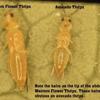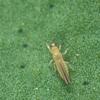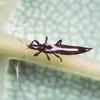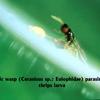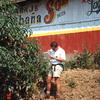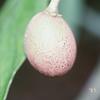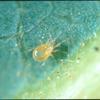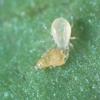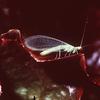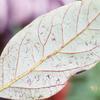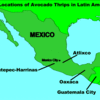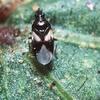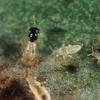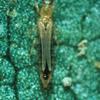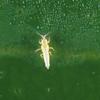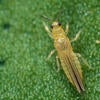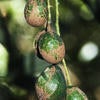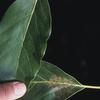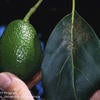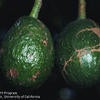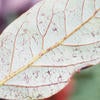Avocado Thrips, Scirtothrips perseae
The Situation: Avocados are subtropical perennial fruit trees 6-10 meters in height. California produces 95% of the nation's crop, and 85% of this harvest is from one cultivar, the black fruit Hass avocado. Annually, 6,000 growers in California produce 260 million pounds of fruit on 65,000 acres, and the harvest in 2007 was worth $245 million. Avocado thrips were first noticed in California in June of 1996 when they were discovered damaging foliage in a Saticoy avocado orchard in Ventura Co
unty. Since this initial discovery, the thrips population has increased rapidly causing significant damage to foliage and fruit in Ventura. In little under a year, the thrips spread southward and was found in San Diego County in May of 1997. By July of 1997, significant damage attributable to avocado thrips was noticed in several orchards in San Diego County. Foreign exploration for the avocado thrips and its natural enemies indicates that this pest is commonly found on avocados grown between Mexico City and Guatemala City. Genetic analyses suggest that the source of California's thrip population was Coatepec-Harinas in Mexico. Avocado thrips have not been recorded in any other host plant in California, indicating it may have a limited host plant range and close evolutionary history with avocados. Avocados evolved in the southern Mexico to northern Guatemala area.
Damage: Thrips numbers build to very high levels (i.e., 100-400 larvae per leaf) over winter and spring causing damage to leaves and, more importantly, scarring on young fruit. In some orchards up to 80-100% of the fruit has been scarred, often with 100% of the surface scarred, resulting in brown mummified fruit. The quantity of first-grade fruit produced has been reduced, on average, by 27% (± 6%) in orchards with avocado thrips.
Distribution: Avocado thrips infests 80% of the commercial avocado acreage in California. To date, this pest has been unable to establish in inland valley areas not within the influence of marine breezes that moderate summer temperatures. Laboratory work has confirmed that this pest is intolerant of moderately high temperatures (30°C [86°F]) and population growth is greatest when temperatures are low (20°C [67°F]). Consequently, populations can decline rapidly over summer.
Research: University of California researchers at Riverside have studied the phenology of avocado thrips in orchards, its preferences for fruit of different ages, and temperature requirements for development. Evaluations assessing the efficacy of various pesticides for control of this pest are ongoing. Work been conducted on the biology and efficacy of commercially available natural enemies for releases into orchards for control of avocado thrips. Field evaluations have shown that augmentative biological control is ineffective for avocado thrips. Extensive foreign exploration efforts in Mexico and Guatemala have been undertaken and no promising natural enemy species were found for possible importation and establishment in California.
More Media on the Avocado Thrips
Applied Biological Control Research: Avocado Thrips
Thrips of California: An Online Thrips key for identifying Thrips online
UC IPM Online: UC Pest Mangement Guidelines
UC Agriculture and Natural Resources: Biological Control Research Helps Address New Avocado Pests
UC IPM Online: Identifying Thrips and Their Damage, Other Thrips, and Predatory Thirps
ForestryImages.org: Avocado Thrips
Center for Invasive Species Research, University of California Riverside
Text provided by Mark Hoddle, Photos courtesy of UC Statewide Integrated Pest Management Program
Mark Hoddle, Extension Specialist and Director of Center for Invasive Species Research
mark.hoddle@ucr.edu
Personal Website
Media within CISR is licensed under a Creative Commons Attribution-NonCommercial-NoDerivs 3.0 Unported License. Permissions beyond this scope may be available at www.cisr.ucr.edu/media-usage.

